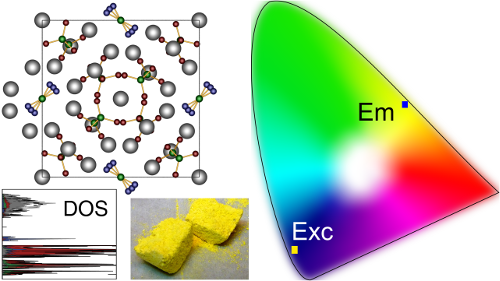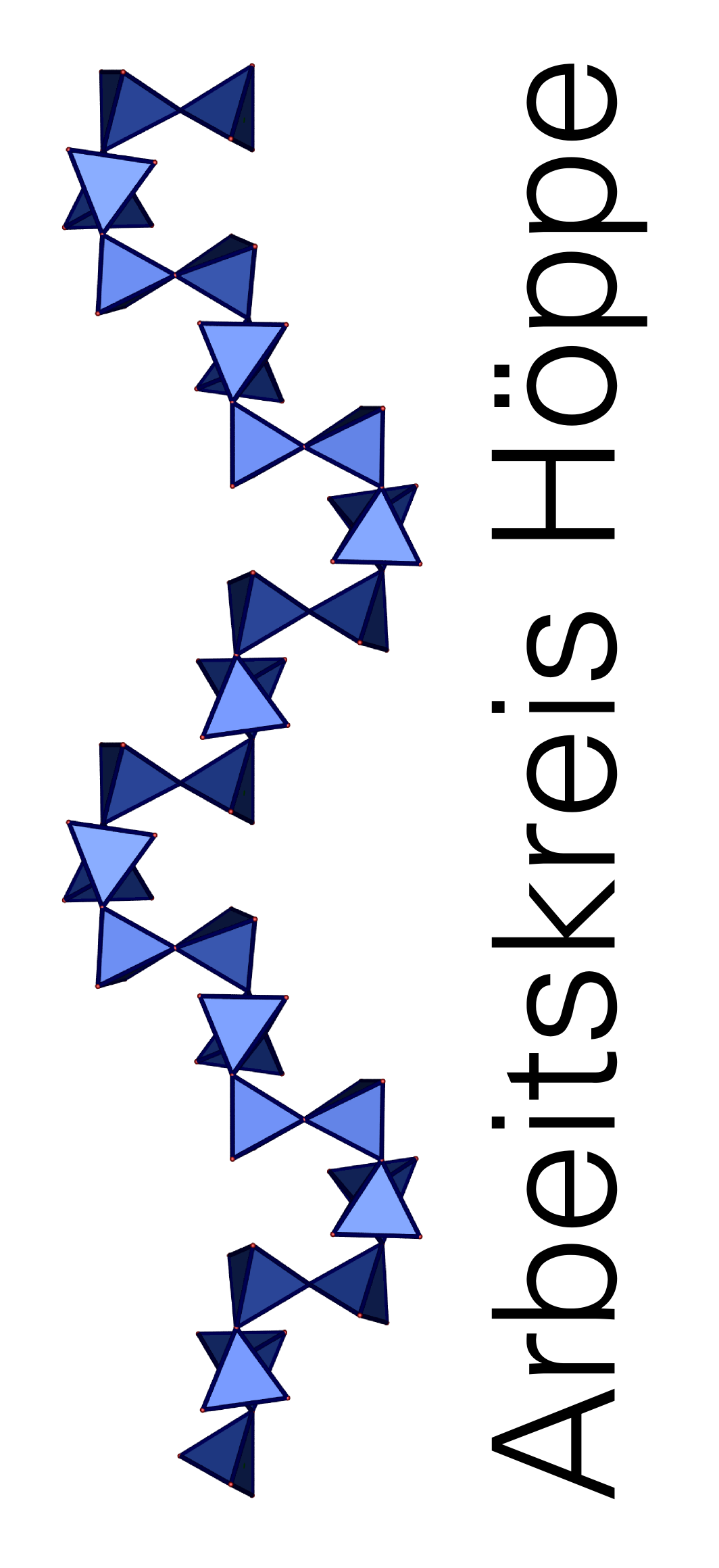 wurde von Stephan Jantz aufgeklärt und enthält CO₂-analoge BN₂³⁻-Hanteln. Die Kristallstruktur ist pseudo-tetragonal und verzwillingt, ferner liegen die Hanteln fehlgeordnet vor – das bevorzugte Szenario wurde über MAPLE- und DFT-Rechnungen (Dank für letztere an Jakoah Brgoch!) identifiziert und stimmt mit den verfeinerten Besetzungen überein. Der bereits patentierte Leuchtstoff absorbiert im Blauen und emittiert gelbes Licht. Den Artikel finden Sie unter https://doi.org/10.1021/acs.chemmater.0c02925
wurde von Stephan Jantz aufgeklärt und enthält CO₂-analoge BN₂³⁻-Hanteln. Die Kristallstruktur ist pseudo-tetragonal und verzwillingt, ferner liegen die Hanteln fehlgeordnet vor – das bevorzugte Szenario wurde über MAPLE- und DFT-Rechnungen (Dank für letztere an Jakoah Brgoch!) identifiziert und stimmt mit den verfeinerten Besetzungen überein. Der bereits patentierte Leuchtstoff absorbiert im Blauen und emittiert gelbes Licht. Den Artikel finden Sie unter https://doi.org/10.1021/acs.chemmater.0c02925
The host structure of the new phosphor Sr6(BO3)3BN2:Eu2+ crystallizes tetragonally (Sr6(BO3)3BN2, P42/mbc, Z = 8, a = 12.8173(3) Å, b = 14.0740(5) Å, Rint = 0.037, R1 = 0.052, and wR2 = 0.121) and features the two borate anions BN23– localized within a channel formed by Sr2+ and BO33– in the same material. Furthermore, spectroscopic data (infrared, Raman, and UV–vis) are discussed, and the first results on the luminescence properties of Sr6(BO3)3BN2:Eu2+ with an emission–emission peaking at 618 nm upon excitation peaking at 465 nm are presented. Electronic structure calculations yield a band gap of 3.91 eV—with the nitrogen atoms being responsible for the smaller band gap than oxoborates—and confirm the disorder of the BN23– ions. Full contribution on... https://pubs.acs.org/doi/10.1021/acs.chemmater.0c02925
